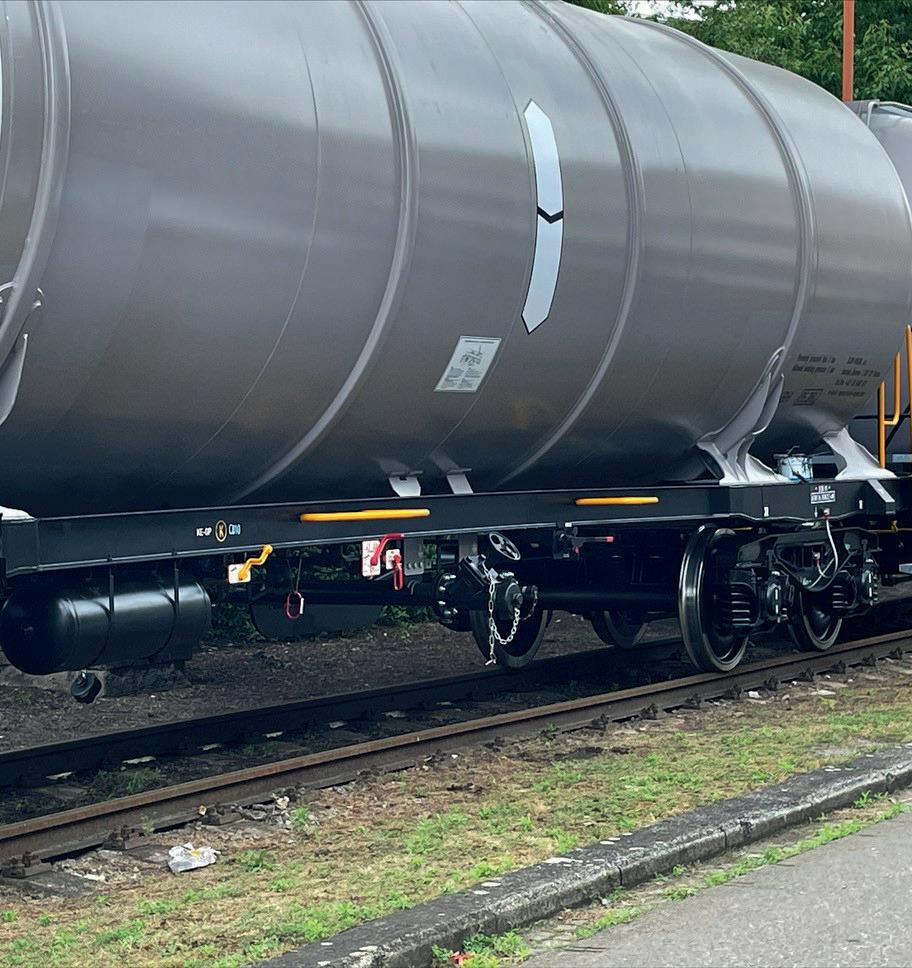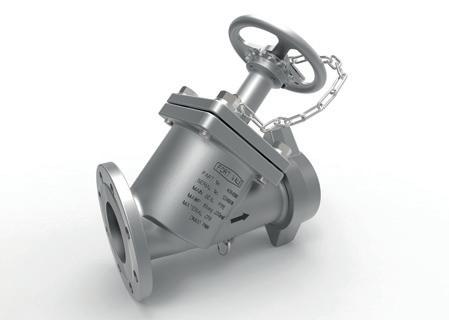
6 minute read
Fort Vale adds rail equipment
CATCH THAT TRAIN
RAIL EQUIPMENT • RAIL HAS PROVEN ITSELF AS A RELIABLE TRANSPORT MODE DURING RECENT DISRUPTIONS, BRINGING A FOCUS ONTO TANK CAR EQUIPMENT. FORT VALE’S ASHLEY LEACH* EXPLAINS
TWO YEARS OF Covid and what do you get? Well it would seem that we get chaos, if one is to glance at the headlines and the state of air travel in Europe at present. But it isn’t all doom and gloom – other modes of freight transport are getting back to normal without any problems at all.
In fact, rail freight is proving adept at solving logistical nightmares that road, air and sea cannot, with usage back to pre-pandemic levels in the UK. Add to that the considerable shortfall in wheat yields because of the war in Ukraine, and the EU suggesting a stopgap solution to utilise the European rail network to get the grain out, and it certainly suggests that the rail network is as vital as it has ever been.
The rail wagon market is a highly diverse sector, both in terms of customer specifications and geographical operating conditions. Fort Vale has many years of experience in designing valve solutions for liquid and gas transport globally, which has enabled us to produce a range of robust valves and access equipment, with versions that suit the requirements of both the European and American markets in the most demanding environments. Over the last ten years, we have made ever-increasing inroads into the supply of equipment for the rail transport market.
MAKE AN OFFER Which begs the question, what can Fort Vale bring to the rail industry?
It may help to give some background. Founded in 1967, Fort Vale quickly established itself as a supplier of valves to the petroleum industry, its products being praised for their excellent build quality, innovative design and ability to withstand the toughest environments. Success in one field led to applying those same qualities to other areas and Fort Vale is now the world’s leading manufacturer of valves and fittings for the safe transport of liquids, powders and gases.
The company’s emphasis has always been one of continual improvement – incremental change borne out of research and experience that leads to a world-beating product, using the best materials and technical know-how derived from the last 50 years of operation. Ostensibly, we are just applying the lessons we have learned over that time period. The problem is the same across all spheres – how to load a wagon safely and securely, with minimum ingress, and then let it out again, safely and securely, with minimum egress.
A rail car or rail wagon is essentially the same type of freight tank that is used on railroads, but the terminology, equipment and regulations differ between the US/Canadian rail industry and the European rail industry – European rail wagons are manufactured in accordance to Regulations concerning International Carriage of Dangerous Goods by Rail (RID), while US rail cars and equipment are manufactured in accordance with Association of American Railroads (AAR).
Similar to road transport, the rail wagon/rail car is a stainless steel or carbon steel pressure vessel surrounded by insulation and mounted on a bogey. Liquid rail wagons/rail cars will be carbon steel if carrying oils and fuels, or stainless steel if carrying chemicals. Rail wagons/rail cars are also manufactured to allow the transport of gases. These are
higher pressure tanks and use specialised equipment different to that of the liquid tanks - so producing equipment that satisfies these requirements is anything but simple.
As a part of all this, equipment has to be able to withstand internal and external pressures – we take great pride in the longevity of our products – they are designed to last, with minimum maintenance.
WHAT RAILROADS NEED In 2012 we were approached by a US client to look into producing rail equipment for that market. We have always had the ability to produce short-run and bespoke projects and, as the equipment trials progressed, it was obvious that our knowledge could be of considerable benefit – those trials led to our original Rail Product Range in 2014. This in turn led to a European range being introduced in 2018.
Building on this, the company has announced a new LPG Rail Product Range for 2022 – the new range represents an increase in corrosion resistance, flow rates and overall effectiveness - including a hydraulic bottom discharge valve; LPG bellows-operated Y-valves; bottom discharge with hydraulic indicator, bottom discharge with mechanical indicator, hydraulic pump, bottom discharge and pump assembly.
One of the biggest advantages over competing systems is that the equipment is manufactured from stainless steel – this improves corrosion resistance and ensures longevity while minimising downtime and M&R costs. The Y-valves have a lockable handle function for security and safety, are bellows-operated and rated to a MAWP of 30 bar (as are the bottom discharge valves), which is comfortably higher than any others on the market and therefore safer to use. The Y-valves also offer significantly increased flow rates compared with other models due to the CFD-optimised internal geometry.
Other features include a Direct Drive Linkage that is always centralised to the poppet; hydraulic indicators that signal if the hydraulic system is in danger of failing (though standard indicators are also available); a low profile pump design, which is 10 kg lighter than conventional designs and gives greater flexibility for positioning on the wagon; and an innovative anti-cavitation plate that reduces the risk of cavitation. Cavitation is the rapid formation and collapse of vapour bubbles within a liquid, when they collide with internal surfaces it causes the valve to wear.
The CFD-optimised internal geometry means quicker discharge times and a substantial increase in flow rates. A wide range of sealing materials is available for complete cargo compatibility. Shear studs as standard, which ensures that the tank seals in the event of a collision. Industrystandard mounting flanges enable fitting to current wagon designs without the need for alterations.
It is the cumulative effect of all these minor improvements and innovations that enable these products to be so effective and, as a company, Fort Vale will continue to improve and innovate in the quest for perfection – it’s the Fort Vale way. All aboard?
MANAGEMENT CHANGES Fort Vale has recently announced a transition at the top of its Netherlands operation, with Terry Clough, managing director of Fort Vale BV due to retire at the end of August. “Terry has worked for Fort Vale for over 34 years and has made an enormous contribution to developing the business in The Netherlands,” the company states. “His technical expertise, loyalty and dedication have led to continuous business growth, making Fort Vale BV the successful operation it is today. Terry also played a significant role in pushing Fort Vale to develop a range of products suitable for the European rail market and helping us become a globally established supplier in this industry.”
Ton Stam will replace Clough as managing director on 1 September. He moves up from his role as European sales manager, based in the UK, but was previously with Fort Vale BV and has a total of 18 years with the company. “Ton is well known amongst our customers and over the last three years has been helping develop business across the tank container, rail and road transport sectors,” Fort Vale says.
FORT VALE’S NEW RANGE OF STAINLESS STEEL
EQUIPMENT FOR RAIL TANK CARS PROMISES TO GIVE
OPERATORS BETTER PERFORMANCE, GREATER
FLEXIBILITY AND A LONGER WORKING LIFE

*Ashley Leach is technical sale engineer at Fort Vale. www.fortvale.com










